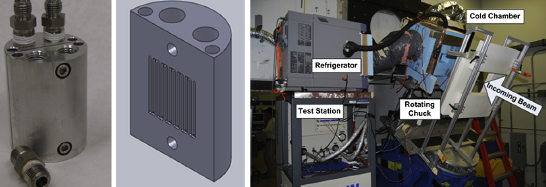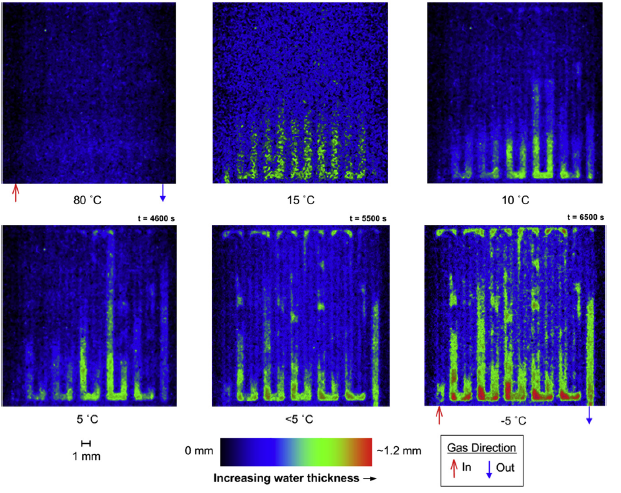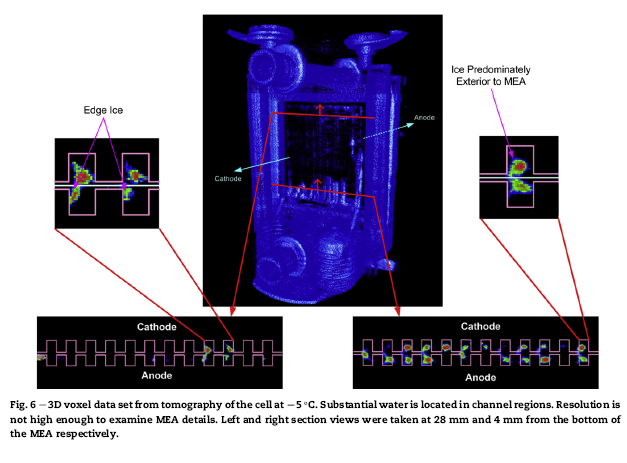We implement both 2D and 3D based neutron imaging techniques on a polymer electrolyte membrane (PEFC) fuel cell under sub-zero conditions. A cell was run at steady state power, purged for 60 s, and then brought down to 5 C inside an environmental chamber situated in front of a neutron beam. A series of 2D radiographs were taken as the cell dropped in temperature capturing the condensation and redistribution of flow field and gas diffusion layer (GDL) water. Immediately after this, 3D tomography was conducted while the cell remained at 5 C. The image data was reconstructed into a 3D model in order to highlight regions where water/ice formations occur. The tomography results show where ice forms within the flow field and which regions are subject to blockages. Ice is observed predominately under channel areas due to water rejection by the GDL. The cathode side channel exit region displays higher ice content which correlates with elevated saturation levels from reaction water production during operation. Larger ice formations reside in the lower region of the flow field due to gravity. These blockages may pose significant issues to cold start of the cell as well as highlight potential drawbacks to shorter purge durations.


